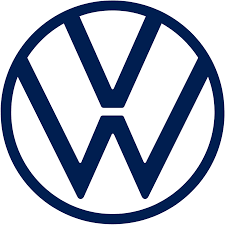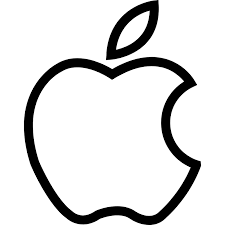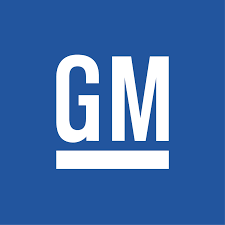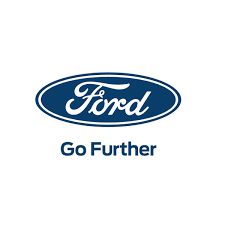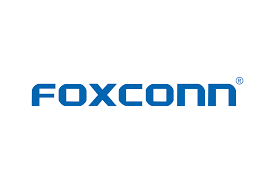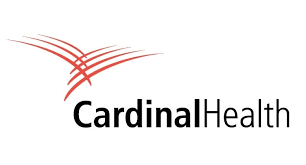A desert is a barren area of landscape where little precipitation occurs and, consequently, living conditions are hostile for plant and animal life. Approximately one-fifth of the Earth’s surface is covered by deserts. A region so arid because of little rainfall that it supports only sparse and widely spaced vegetation or no vegetation at all. This is an area in which few forms of life can exist because of lack of water, permanent frost, or absence of soil. This area of the ocean in which it is believed no marine life exists. Desert is unsettled area between Mississippi and rocky mountains thought to be unsuitable for human habitation. Experts have several ways of categorizing the different types of deserts, but most will agree on some version of the following four classifications: hot and dry, semiarid, coastal, and cold. Due to intense heat, rain is known to evaporate in hot and dry deserts before it can even reach the ground. Many semiarid deserts get so little rain because tall mountain ranges prevent precipitation from reaching these drier regions. These are the 10 largest deserts in the world by size.
1.Antarctic: 5,500,000 sq. miles
Antarctica is the driest continent. The Antarctic is located in the southern hemisphere and covered by around 7.1 million cubic miles of an ice sheet that is approximately 1.5 miles thick. With a humidity rating of 5% it is the driest region on the planet, and so, Antarctic is classified as a large barren cold desert. The name Antarctica is the romanised version of the Greek compound word ,meaning is “opposite to the Arctic”, “opposite to the north”. Very little snow or rain falls on the continent, but because it is so cold, the small amount of precipitation that does fall does not melt. 98% of Antarctica is covered by ice. The lowest temperature ever recorded on Earth was at Russia’s Vostok Station in Antarctica: -89.2°C (-128.6°F) on 21st July, 1983. About 70% of Earth’s fresh water is in the Antarctic ice cap. There are no countries in Antarctica; the continent is governed by an international treaty. There are no permanent residents. But up to 1,000 people may be wintering over at various research stations. It is the fifth-largest continent and nearly twice the size of Australia. At 0.00008 people per square km, it is by far the least densely populated continent. Antarctica is a good place to find meteorites, or rocks that fall from space to Earth. Scientists find more meteorites in Antarctica than any other place in the world. NASA sends teams to Antarctica to learn more about the planet Mars. Antarctica and Mars have a lot in common. Both places are cold. Both places are dry like a desert.
Antarctica and Arctic deserts are classified as cold deserts. Due to their positions at the northern and southern poles of our planet, they are also known as polar deserts. They are the largest deserts in the world. The former makes up the entire continent, while the latter stretches across numerous countries like Canada, Greenland, Norway, Sweden, Finland, and Russia. They are very dry, but not in the traditional sense. They are cold all year round with frigid winters. Instead of sand, the surrounding surface is covered in layers of ice and snow. The average temperature hovers around freezing, but can plummet to -50 degrees Celsius. During wet seasons, cold deserts can get up to eighteen inches of rain every year, but on average, they receive only six to ten. Scientists take turns going there to study the ice. Tourists visit Antarctica in the summer season. One tool that NASA uses is ICESat. That stands for the Ice, Cloud and land Elevation Satellite. Using ICESat, NASA can measure changes in the size of Antarctica’s ice sheets. ICESat also helps NASA to understand how polar ice may change and affect the rest of the planet. Melting ice sheets in Antarctica may change sea levels all over the world. Some experts even claim that certain areas in Antarctica have not seen rain in 14 million years. Few plants can survive such brutal conditions. Many of the animals that call these polar regions home have easily adapted to the cold, such as bears, penguins, and seals. About Organisms native to Antarctica include many types of algae, bacteria, fungi, plants, protista.
2.Arctic: 5,000,000 sq. miles
Arctic covers the island groups of Svalbard, Franz Josef Land, Severny Island and Severnaya Zemlya in the Arctic Ocean, above 75 degrees north latitude. The Arctic is the second largest desert on the planet and is slightly smaller in size than the Antarctic. It is so cold that the snow that does fall doesn’t melt, so deep snow covers the land and ice. As long as there is some source of moisture and some way to lift or cool the air, it can snow even at incredibly cold temperatures. The top part of the Arctic region, known as the Arctic Circle, receives minimal precipitation and is classified as desert land. The southern region of the Arctic, also known as Tundra, has greater precipitation and therefore, supports a thriving ecosystem. A large part of the Arctic is sea ice. The region is covered with glaciers, snow, and bare rock in a harshly cold environment. It has an area of 161,400 square kilometres (62,300 sq mi). The ecoregion stretches 2,000 km west-to-east, and 1,000 km north-to-south, across the Arctic Ocean north of Norway and Russia. Arctic, northernmost region of the Earth, centred on the North Pole and characterized by distinctively polar conditions of climate, plant and animal life, and other physical features. The term is derived from the Greek arktos (“bear”), referring to the northern constellation of the Bear. It has sometimes been used to designate the area within the Arctic Circle—a mathematical line that is drawn at latitude 66°30′ N, marking the southern limit of the zone in which there is at least one annual period of 24 hours during which the sun does not set and one during which it does not rise. This line, however, is without value as a geographic boundary, since it is not keyed to the nature of the terrain.
The Arctic Desert refers to a number of islands north of 75 degrees north latitude. This includes northern Novaya Zemlya, Franz Josef Islands and Severnaya Zemlya. Mapped ecoregion boundaries correspond to the arctic desert zone in Kurnaev’s forest map of the USSR. However, northern sections of the Taimyr Peninsula, Novosibirsk Islands and Wrangel Island were excluded from this region as their lower latitudes permit a wider range and higher abundance of species. International interest in the Arctic and subarctic regions has steadily increased during the 20th century, particularly since World War II. Three major factors are involved: the advantages of the North Pole route as a shortcut between important centres of population, the growing realization of economic potentialities such as mineral like petroleum and forest resources and grazing areas, and the importance of the regions in the study of global meteorology. The Arctic lands have developed geologically around four nuclei of ancient crystalline rocks. The largest of these, the Canadian Shield, underlies all the Canadian Arctic except for part of the Queen Elizabeth Islands. It is separated by Baffin Bay from a similar shield area that underlies most of Greenland. The Arctic desert is home to a number of highly adapted species, which can cope with the extreme conditions or, as some long-distant migratory bird species come there only for a short summer season.
3.Sahara: 3,320,000 sq. miles
The Sahara is a desert on the African continent. Around 25% of the land is covered by sand with the total region comprising a mix of hilly areas and shallow land. The Sahara is the third largest desert and is part of a high-temperature zone, unlike the colder regions of Arctic and Antarctic. The total area varies but mostly stretches approximately 3,000 miles across and around 1,100 miles north to south. The northern areas of the Sahara experiences mostly dry subtropical temperatures while the southern areas remain mostly dry tropical. It is the largest hot desert in the world. The name ‘Sahara’ is derived from the Arabic word for “desert”. The population of the Sahara is just two million. For several hundred thousand years, the Sahara has alternated between desert and savanna grassland in a 20,000 year cycle caused by the precession of the Earth’s axis as it rotates around the Sun, which changes the location of the North African Monsoon. The area is next expected to become green in about 15,000 years . The Sahara is bordered in the west by the Atlantic Ocean, in the north by the Atlas Mountains and Mediterranean Sea, in the east by the Red Sea, and in the south by the Sahel—a semiarid region that forms a transitional zone between the Sahara to the north and savannas to the south. The enormous desert spans 11 countries: Algeria, Chad, Egypt, Libya, Mali, Mauritania, Morocco, Niger, Western Sahara, Sudan and Tunisia. Other topographical features include mountains, plateaus, sand- and gravel-covered plains, salt flats, basins and depressions. Mount Koussi, an extinct volcano in Chad, is the highest point in the Sahara at 11,204 feet (3,415 m), and the Qattara Depression in Egypt is the Saraha’s deepest point, at 436 feet (133 m) below sea level. The highest peak in the Sahara is Emi Koussi (3,415m), a volcano located in Tibesti Mountains, Chad. In east-central Algeria lies the Isaouane-n-Tifernine Sand Sea, with sand dunes as high as 450m – some of the tallest in the world. The largest dunes in Morocco are the Erg Chigaga – with some dunes reaching a massive 300m.
Camels, also known as the “ships of the desert,” are well-adapted for the hot, arid environment, according to the San Diego Zoo. The humps on a camel’s back store fat, which can be used for energy and hydration in between meals. Camels store energy so efficiently that they can go more than a week without water and several months without food. Other residents of the Sahara include a variety of gazelles, addax, cheetahs, caracals, desert foxes and wild dogs, according to the Sahara Conservation Fund. Many reptile species also thrive in the desert environment, including several species of snakes, lizards, and even crocodiles in places where there is enough water. Plant species in the Sahara have adapted to the arid conditions, with roots that reach deep underground to find buried water sources and leaves that are shaped into spines that minimize moisture loss. The most arid parts of the desert are completely void of plant life, but oasis areas, such as the Nile Valley, support a large variety of plants, including olive trees, date palms and various shrubs and grasses. One proposal for mitigating the effects of climate change is to install large-scale wind and solar farms in the Sahara. The farms would provide clean energy and reduce the amount of greenhouse gases entering the atmosphere, and may also promote increased precipitation in the vicinity. Several activities you can do in the Sahara such as quad biking, stargazing, sand surfing, camping or trekking. Our Sahara Desert Trek is a fantastic adventure, taking us on a 4 day trek to the top of the Chegaga Dunes.
Although water is scarce across the entire region, the Sahara contains two permanent rivers (the Nile and the Niger), at least 20 seasonal lakes and huge aquifers, which are the primary sources of water. Despite the harsh, arid conditions of the desert, several plants and animals call the region home. There are approximately 500 species of plants, 70 known mammalian species, 90 avian species and 100 reptilian species that live in the Sahara, plus several species of spiders, scorpions and other small arthropods, according to World Wildlife Fund. Camels are one of the most iconic animals of the Sahara. The large mammals are native to North America and eventually made their way across the Bering Isthmus between 3 and 5 million years ago, according to a study in the Research Journal of Agriculture and Environmental Management in 2015. Camels were domesticated about 3,000 years ago on the Southeast Arabian Peninsula, to be used for transportation in the desert.The Sahara desert has a variety of land features, but is most famous for the sand dune fields that are often depicted in movies. The dunes can reach almost 600 feet (183 meters) high but they cover only about 15 percent of the entire desert. The average annual temperature is 30°C, whilst the hottest temperature ever recorded was 58°C. The area receives little rainfall, in fact, half of the Sahara Desert receives less than 1 inch of rain every year.
4.Arabian Desert: 900,000 sq. miles
The Arabian Desert appears as a vast expanse of light sand-coloured terrain with an occasional indistinct line of escarpments or mountain ranges, black lava flows, or reddish systems of desert dunes stretching to the horizon. Arabian Desert is the largest desert area on the continent—covering an area of about 900,000 square miles (2,300,000 square km)—and the second largest on Earth, surpassed in size only by the Sahara, in northern Africa. The Arabian desert is part of the Arabian Peninsula that extends across the 220 latitude and 120 to 340 north. Several countries that share the desert land include; Saudi Arabia, Yemen, Iraq, Oman, Kuwait, Qatar, Jordan and the UAE. Large parts of the desert experiences extremely high temperatures, reaching 1300 F during peak summer season. Arabian Desert, great desert region of extreme southwestern Asia that occupies almost the entire Arabian Peninsula. Mountainous highlands rise in the northwestern portion of the Hejaz region, in the Asir region, in Yemen, and in Oman. Lesser ranges have been uncovered by erosion in the interior. Eighteen volcanic fields are scattered through the west, mainly in Hejaz, several of them more than 10,000 square miles (25,000 square km) in area.
The Arabian Desert is bordered to the north by the Syrian Desert, to the northeast and east by the Persian Gulf and the Gulf of Oman, to the southeast and south by the Arabian Sea and the Gulf of Aden, and to the west by the Red Sea. A large part of the Arabian Desert lies within the modern kingdom of Saudi Arabia. Yemen, on the coast of the Gulf of Aden and the Red Sea, borders the desert to the southwest. Oman, bulging out into the Gulf of Oman, lies at the eastern edge of the desert. The sheikhdoms of the United Arab Emirates and Qatar to the west stretch along the southern coast of the Persian Gulf at the desert’s northeastern limit. The emirate of Kuwait abuts the northern Persian Gulf between Saudi Arabia and Iraq. In the northwest the desert extends into Jordan.
Vegetation at first seems nonexistent, but the discerning eye can find sparse patches of growth on the surface, or bits of green where shrubs strive to survive. There is almost always a breeze, which changes seasonally to winds of gale force. The Sun and Moon are bright in clear skies, although dust and humidity may lower visibility. The Arabian Desert consists of two major regions. The first, the ancient Arabian platform, is in the west. It is composed mainly of Precambrian gneiss and was assembled roughly 900 to 541 million years ago. The second region, in the east, comprises sedimentary rock layers deposited over the past 541 million years on continental shelves and within marine basins along the margins of the Arabian platform. Vast amounts of petroleum formed between those sedimentary rock layers, making the Arabian Desert the richest petroleum-producing region in the world. Roughly 33 million years ago, early in the Oligocene Epoch, Arabia began to split away from Africa. That was the onset of a period of rifting that was caused by upwelling from Earth’s mantle beneath the regions now lying on either side of the Red Sea.
5.Gobi Desert: 500,000 sq. miles
Located in Central Asia, the Gobi desert is shared by Mongolia and China. Unlike the Sahara and Arabian deserts, Gobi is mostly made up of hard rock and not sand. The desert is a result of the rain shadow from the tall Himalayan Mountains which prevents precipitation carrying winds from reaching the Gobi. Maximum temperature can touch a high of 1130 F during peak summer season while it can dip to as low as -400 F is some parts. The Gobi Desert is a large desert or brushland region in East Asia. The Gobi is a rain shadow desert, formed by the Tibetan Plateau blocking precipitation from the Indian Ocean reaching the Gobi territory. The Gobi is overall a cold desert, with frost and occasionally snow occurring on its dunes. Besides being quite far north, it is also located on a plateau roughly 910–1,520 m (2,990–4,990 ft) above sea level, which contributes to its low temperatures. An average of approximately 194 mm (7.6 in) of rain falls annually in the Gobi. Additional moisture reaches parts of the Gobi in winter as snow is blown by the wind from the Siberian Steppes.
Large copper deposits are being mined by Rio Tinto Group. The mine was and remains controversial. There was significant opposition in Mongolia’s parliament to the terms under which the mine will proceed, and some are calling for the terms to be renegotiated. The Gobi name come from Mongolian gobi, meaning “waterless place. Gobi is not sandy desert but bare rock. It is possible to drive over this surface by car for long distances in any direction: northward toward the Altai and Hangayn mountain ranges, eastward toward the Da Hinggan Range, or southward toward the Bei Mountains and Huang He valley. The Gobi consists of the Gaxun, Junggar (Dzungarian), and Trans-Altai Gobi in the west, the Eastern, or Mongolian, Gobi in the centre and east, and the Alxa Plateau (Ala Shan Desert) in the south. The Eastern Gobi is similar to the western regions, with elevations varying from 2,300 to 5,000 feet (700 to 1,500 metres), but it receives somewhat more precipitation—up to 8 inches (200 mm) per year—though it lacks significant rivers. The Gobi’s plains consist of chalk and other sedimentary rocks that are chiefly Cenozoic in age (i.e., up to about 66 million years old), though some of the low, isolated hills are older. The terrain contains small masses of shifting sands.
6.Kalahari Desert: 360,000 sq. miles
This subtropical desert is located in the southern part of the African continent and shared between Botswana, Namibia, South Africa, and Angola. One of the most interesting Kalahari Desert facts is that it is not a desert in the strictest sense of the word, as it receives too much rainfall – between 5 and 10 inches annually. However any rain filters rapidly through the vast expanses of sand, leaving nothing on the surface, turning the Kalahari into the “thirstland”. A more accurate definition of a desert is a region in which “the evaporation rate is twice as great as the precipitation”. This is true for the southwestern half of the Kalahari. The northeastern portion, however, receives much more rainfall and, climatically, cannot qualify as a desert; and yet, it is totally lacking in surface water. In the southwest it merges with the Namib, the coastal desert of Namibia. Kalahari is derived from the Tswana word Kgala, meaning “the great thirst”, or Kgalagadi, meaning “a waterless place”; The Kalahari has vast areas covered by red sand without any permanent surface water. The Kalahari’s longest north–south extent is roughly 1,000 miles (1,600 kilometres), and its greatest east–west distance is about 600 miles; its area has been estimated at some 360,000 square miles (930,000 square kilometres). Extended dunes cover most of the north and northwestern parts of the Kalahari. Numerous pans exist within the Kalahari, including the Groot-vloer Pan and Verneukpan where evidence of a wetter climate exists in the form of former contouring for capturing of water. North and east, approximately where the dry forests, savannahs and salt lakes prevail, the climate is sub-humid rather than semi-arid. South and west, where the vegetation is predominantly xeric savanna or even a semi-desert, the climate is “Kalaharian” semi-arid. During peak summer, the temperature can reach 1150 F during the day and fall to 750 F at night. Winter temperatures drop to 100 F. Bedrock is exposed only in the low but vertical-walled hills, called kopjes, that rarely but conspicuously rise above the general surface. Aside from the kopjes, three surfaces characterize virtually all of the Kalahari: sand sheets, longitudinal dunes, and vleis (pans).
Due to its low aridity, the Kalahari supports a variety of flora. The native flora includes acacia trees and many other herbs and grasses. The kiwano fruit, also known as the horned melon, melano, African horned cucumber, jelly melon, or hedged gourd, is endemic to a region in the Kalahari Desert. The Kalahari is home to many migratory birds and animals. Previously havens for wild animals from elephants to giraffes, and for predators such as lions and cheetahs, the riverbeds are now mostly grazing spots, though leopards and cheetahs can still be found. The area is now heavily grazed and cattle fences restrict the movement of wildlife. Among deserts of the Southern Hemisphere, the Kalahari most closely resembles some Australian deserts in its latitude and its mode of formation. The temperatures in the Kalahari Desert are extreme, with summers being very hot while winter temperatures can go below zero degrees Celsius at night. This is a result of the Kalahari’s relatively high altitude and predominantly clear, dry air. Arid-adapted game includes springbok, gemsbok, wildebeest, kudu, steenbok and duiker. The Kalahari is home to desert specialties such as meerkat, bat-eared foxes, cape fox and brown hyena. One of the more unexpected Kalahari Desert facts is that all three African big cats can be found here –cheetah, leopard and the famous black-maned Kalahari lions. The Kalahari is the southernmost desert in Africa. It is the sixth biggest desert by area on Earth and the second biggest in Africa after the Sahara.
7.Great Victoria Desert: 220,000 sq. miles
The largest desert on the Australian continent is located in the southwestern region and extends over 700 miles across. The desert is mostly arid and made up of rocky terrain and undulating dunes. During the summer season, temperatures can exceed 1050 F, and in winters dip to as low as 680 F. The Great Victoria Desert is a sparsely-populated desert ecoregion and interim Australian bioregion in Western Australia and South Australia. The Great Victoria consists of many small sandhills, grassland plains, areas with a closely packed surface of pebbles and salt lakes. The area of the Great Victoria Desert is shared roughly equally by the states of South and Western Australia. It is north of the Nullarbor Plain and south of the Musgrave Ranges. The climate of the GVD is arid, with variable and unpredictable rainfall that can fall in either summer or winter. The median annual rainfall (1890–2005) averaged across the GVD is 162 mm. Its pristine, arid wilderness includes red sand dunes, stony plains and dry salt lakes. There is no permanent surface water, with scarce rock holes, claypans and soaks holding water only during wet periods. Within this landscape there are Aboriginal communities at Oak Valley, Watarru and Walalkara. 15 bird species with a conservation rating including the princess parrot, malleefowl and scarlet chested parrot. The Great Victoria Desert can be very dry and sandy. However, plants and animals still live there. The plants are adapted to the dry, arid climate, otherwise they would not be able to survive. Wallabies, bandy snakes, lizards. kangaroos . and many birds live in the Great Victoria Desert. These animals have also adapted to survive in extreme heat and extreme cold. It was penetrated in 1875 by a party led by the explorer Ernest Giles, who named it the Great Victoria Desert. Supports many vegetation types, including eucalypt open woodlands, mulga woodlands, acacia shrublands, casuarina and mallee shrublands and woodlands, and chenopod and samphire shrublands. Of note are the sparse woodlands of stately marble gums.
8.Patagonia Desert: 200,000 sq. miles
Located in South America between the Andes and the Atlantic Ocean, the Patagonia desert is part of Argentina and Chile. A cold winter desert, temperatures here average 370 F. The Patagonian Desert is the largest of the 40° parallel and is a large cold winter desert, where the temperature rarely exceeds 12 °C and averages just 3 °C. The region experiences about seven months of winter and five months of summer. Frost is not uncommon in the desert but, due to the very dry condition year round, snow is rare. It is bounded, approximately, by the Patagonian Andes to the west, the Colorado River to the north, the Atlantic Ocean to the east, and the Strait of Magellan to the south; the region south of the strait—Tierra del Fuego, which is divided between Argentina and Chile—also is often included in Patagonia. Desert and semidesert cover the Patagonian tableland that extends from the Andes to the Atlantic Ocean. The general aspect of this tableland is one of vast steppelike plains, rising in terrace fashion from high coastal cliffs to the foot of the Andes; but the true aspect of the plains is by no means as simple as such a general description would imply. The land along the Negro River rises in a series of fairly level terraces from about 300 feet (90 metres) at the coast to about 1,300 feet at the junction of the Limay and Neuquen rivers and 3,000 feet at the base of the Andes. South of the Negro River, the plains are much more irregular. Volcanic eruptions occurred in this area until fairly recent times, and basaltic sheets covered the tableland east of Lakes Buenos Aires and Pueyrredon.
- Syrian Desert: 200,000 sq. miles
Syrian Desert located in West Asia, the desert forms part of Syria, Iraq, and Jordan. The Syrian desert is about the same size as Patagonia but is a subtropical desert which is mostly dry. The Syrian Desert also known as the Syrian steppe, the Jordanian steppe, or the Badia, is a region of desert, semi-desert and steppe. The land is open, rocky or gravelly desert pavement, cut with occasional wadis. The desert is bounded by the Orontes Valley and the volcanic field of Harrat al-Shamah to the west, and by the Euphrates to the east. In the north, the desert gives way to the more fertile areas and to the south it runs into the deserts of the Arabian Peninsula. Several parts of the Syrian Desert have been referred to separately such as the Palmyrene desert around Palmyra, and the Homs desert. The eastern section of the Syrian Desert, that within borders of Iraq, can be referred to as the Western Desert.
The Syrian desert, in turn, is divided into two parts, which differ in their surface structure. The first, a plateau in the southwest, is more elevated than the other part and also much drier. The part to the northeast starts at lower elevation in the south—2,208 feet (673 m)—and ends at 623 feet (190 m) in the north. This part is dry and has dry river channels (wadis) exposed to flooding. These wadis range in length from 93 to 186 miles (150–300 km) and in width from 0.3 to 0.6 miles (0.5 to 1 km). Annual precipitation in the Syrian desert does not exceed 5.85 inches (150 mm). Receiving on the average less than 5 inches (125 mm) of rainfall annually and largely covered by lava flows, it formed a nearly impenetrable barrier between the populated areas of the Levant and Mesopotamia until modern times ; several major motor routes and oil pipelines now bisect it. In the late 1970s, there was much oil exploration.
10.Great Basin Desert: 190,000 sq. miles
The Great Basin Desert is located in the United States and forms part of the Greater North American Desert. It’s mountain peaks (33) reaches 10,000 feet. Since large parts are mountainous, the temperatures vary based on the elevation. It covers an arid expanse of about 190,000 square miles (492,000 square km) and is bordered by the Sierra Nevada range on the west, the Wasatch Mountains on the east, the Columbia Plateau on the north, and the Mojave Desert on the south. Minerals have proved to be the greatest resource of the Great Basin. Much of the nation’s gold, magnesite, barite, and mercury are produced in Nevada, which is also among the leading producers of lithium, silver, diatomite, and gemstones. Utah is the leading producer of beryllium ore and is among the leading producers of gold, silver, copper, iron ore, and molybdenum. The desert is a geographical region that largely overlaps the Great Basin shrub steppe defined by the World Wildlife Fund, and the Central Basin and Range ecoregion defined by the U.S. Environmental Protection Agency and United States Geological Survey. The desert is one of the four biologically defined deserts in North America, in addition to the Mojave, Sonoran, and Chihuahuan Deserts. There are more than 33 peaks within the desert with summits higher than 9,800 feet (3,000 m), but valleys in the region are also high, most with elevations above 3,900 feet (1,200 m). Different locations in the desert have different amounts of precipitation, depending on the strength of these rain shadows. The Great Basin Desert is the only “cold” desert in the country, where most precipitation falls in the form of snow. A desert is defined as a region that receives less than 10 inches (25cm) of precipitation per year.
The mountain ranges of the Great Basin have been likened, in an old survey report, to a group of caterpillars all crawling irregularly northward. The ranges are from 60 to 120 miles (95 to 190 km) long and 3 to 15 miles (5 to 24 km) wide. The valleys are usually somewhat wider than the ranges and are mostly deserts, with floors 1,000 to 6,000 feet (300 to 1,800 metres) above sea level. The annual rainfall of 6 to 12 inches (150 to 300 mm) in the basin supports little more than sparse desert or semidesert vegetation. In many places volcanic rocks that formed about 30 million years ago have been cut and displaced by the block faults. There are historical records of earthquakes and constant contemporary micro-earthquakes, indicating that faulting has continued to the present day. The valley floors have deep soils resulting from thousands of years of mountain erosion. These valleys receive little rainfall; most of precipitation occurs as winter snow. The combination of hot, dry summers and cold winters results in a characteristic vegetation dominated by aromatic, perennial shrubs such as various forms of sagebrush . This vegetation type is dominated by one species and is known as the Great Basin Sagebrush Zone. In the wetter, more northerly parts there is an increasing proportion of grasses, giving rise to a vegetation type termed Sagebrush Steppe. In other, scattered regions of this desert, where the soil particles are very fine, there are permanent lakes or temporary lakes. These areas and the surrounding lands can have a high salt concentration caused by the evaporation of water. Such areas are dominated by various types of saltbush giving a vegetation type known as Salt-Desert Shrub.
Tagged : 10 / according / area / based / biggest / deserts / great / in / largest / on / size / ten / the / to / world





